How to grow corn on your site
Many gardeners try to plant this most ancient bread plant in their summer cottage, so its tasty and healthy cobs are liked not only by adults, but also by children. However, not everyone manages to grow this southern and thermophilic culture.
Nevertheless, if you follow the basic agricultural techniques, you can still get a decent harvest of corn, you just need to follow the simplest advice that you will receive if you carefully read this material.
Note! Next, we will talk about the rules of sowing and growing exactly sweet corn, not feed.
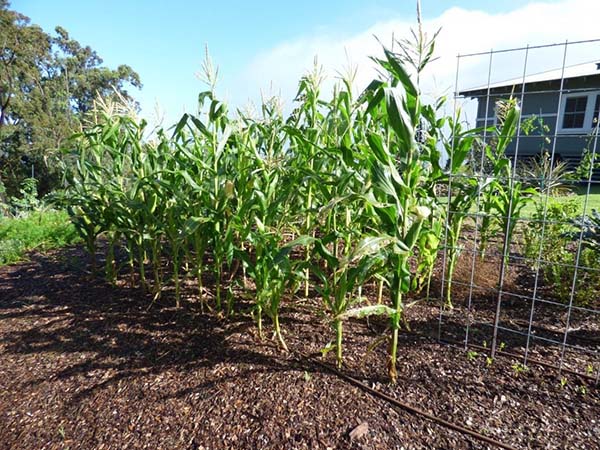
Content
- 1 Features of growing corn
- 2 When to plant corn: optimal planting dates
- 3 Choosing a place and preparing a bed for planting corn
- 4 How to plant corn in open ground: sowing rules
- 5 Growing corn through seedlings
- 6 Outdoor corn care: growing rules
- 7 Pests and diseases of corn
- 8 When to harvest corn and how to store it
Features of growing corn
Despite the fact that corn is an unpretentious crop, watering alone will not be possible, although the future harvest largely depends on it.
Most gardeners have the misconception that the plant can be grown especially in the southern regions of the country, but this is not the case. In regions with short summers corn also grows well, although, as a rule, in such cases, initially planted on seedlings... This is due to the fact that when sowing seeds directly into the ground, the culture often simply does not have time to reach technical ripeness during the season (due to the short summer).
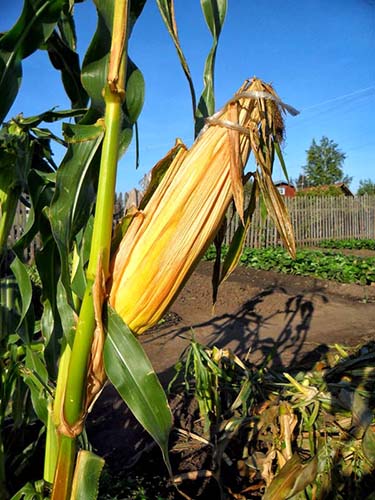
In general, when growing corn in the country, the following main points must be taken into account:
- the right choice of variety (always choose zoned varieties);
- adherence to the timing of planting in open ground or seedlings;
- choice of location, taking into account the preferences of the plant;
- compliance with the rules of further care;
- timely harvest.
When to plant corn: optimal planting dates
Corn is a warm and light-loving plant, so it is not recommended to rush to plant it in spring.
With the seedling method of growing, sowing corn seeds at home is carried out 4 weeks before planting in open ground, with 1 week allotted for the emergence of seedlings.
At what temperature
Sowing should be carried out only when the soil warms up to a temperature of + 10-12 degrees (or even better + 13-14 degrees) and the threat of return spring frosts has passed.
Important! You should not sow corn in insufficiently warmed soil, since seedlings appear very slowly and uncommonly, the seeds are more damaged by the wireworm, moldy and lose their germination.
By the way! In the phase of 2-3 true leaves, corn
can withstand frosts up to -2 degrees, however, at -4 degrees the seedlings die.
Estimated sowing dates in different regions
Of course, depending on the climatic characteristics of your region of residence and the current weather conditions, the timing of planting corn in open ground and for seedlings may vary, but approximate dates can still be called:
- In the South of Russia - this is the second half - the end of April;
There is no sense in planting corn seedlings in the southern regions.
- In the Central zone (Moscow region) - the second half of May;
This means that corn can be planted for seedlings in the second half of April.
- In the North-West (in the Leningrad region) - early June;
- In the Urals and Siberia - not earlier than 3 decades of May - early June.
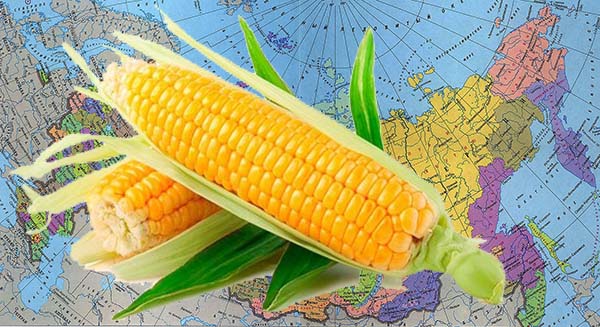
According to the lunar calendar in 2020
Many gardeners believe that corn should be planted according to the lunar calendar.
Auspicious days according to the lunar calendar, when you should sow corn for seedlings or in open ground in 2020, are the following dates:
- in April - 1, 2, 7, 24, 27-29;
- in May - 4-6, 27-29;
- in June - 1-4, 22, 23, 28-30.
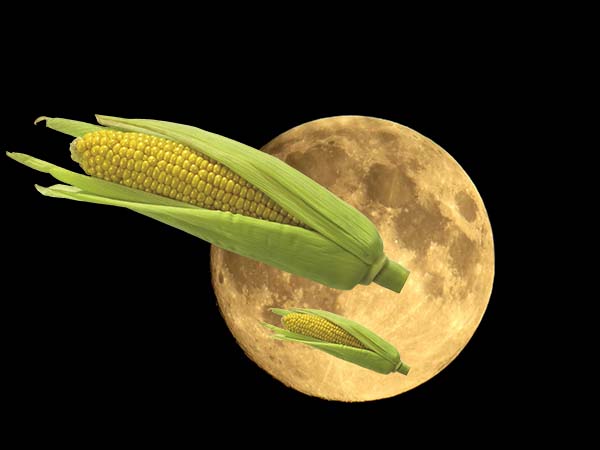
The following dates are considered unfavorable days for sowing corn in 2020 (the days of the Full Moon and New Moon, as well as the period when the Moon is in Aquarius, since this is a barren and dry sign -italicized):
- in April - 8,15-17, 23;
- in May - 7,13-14, 22;
- in June - 5,9-11, 21.
According to the lunar calendar, from the magazine "1000 Tips for Summer Residents".
Choosing a place and preparing a bed for planting corn
In order for the plant to actively grow, it is necessary to carry out several preparatory procedures in advance. This will help in the future to achieve the desired yield.
Place on the site
A well-lit place for planting corn should be selected.
Corn is very demanding on light, and if you plant it in the shade, then noticeably fewer leaves and cobs are formed, and their quality will noticeably decrease.
It is very important to consider the fact that corn does not like wet (flooded) areas and nearby groundwater.
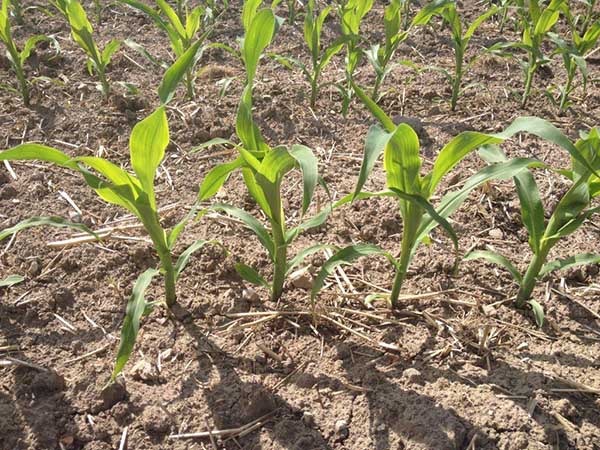
And also in view of the fact that it is very heat-loving plant, it would be ideal to plant it on high (warm) beds.
After what crops to plant
Corn is not very demanding on its predecessors.
Most suitable predecessors for planting corn are the following crops: cereals, legumes (in short, siderates), melons (pumpkin, watermelons, cucumbers), vegetables (tomatoes, cabbage) and potatoes.
Worst predecessors, after which it is undesirable to plant corn, is corn itself (especially fodder) and millet.
The rules of crop rotation should be observed in order to prevent the spread of common pests and diseases.
Best neighbors
Often, gardeners prefer to grow corn in their country house together with other crops, so to speak, using it as a support and protection from drafts and cold northern winds.
So, perfect neighbors for corn are cucumbers, which will bear better fruit thanks to the diffused light, which will provide the long and narrow leaves of the corn.
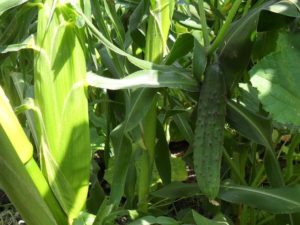
Video: joint planting of cucumbers and corn
You can also plant legumes and the same pumpkin nearby (wide leaves will protect the roots of the culture from overheating and prevent weeds from growing).
What soil is needed and how to prepare the garden
Corn is not very (moderately) soil-demanding, so it will grow just fine on light, fertile soils.
By the way! The plant will be able to grow in slightly acidic soil, but not below pH 5, otherwise it will start to hurt a lot.
The preparation of the site (beds for planting corn) consists in digging it up on a shovel bayonet in the fall and / or spring, a month before the alleged procedure.
In the fall, it is advisable to plow (dig up) the area with a shovel bayonet (about 25-30 cm), and in the spring again, but only loosening it by 1/2 the shovel bayonet (about 12-15 cm).
At the same time, it is recommended to make a complex of mineral fertilizers for digging in the following proportion for each square meter. plot meter:
- Superphosphate - 30-40 g (mandatory in autumn).
- Potassium sulfate - 20-30 g (preferably in autumn, but also possible in spring).
- Ammonium nitrate - 30-40 g (in spring). Or urea (urea), but it is absorbed by plants more slowly than ammonium nitrate.
If you have not prepared the garden at all in the fall, then you can apply a full complex mineral fertilizer - nitroammofosku (again, 30-40 grams per 1 sq. M).
If you are a supporter of organic farming (and not only), then as nitrogen fertilization you can add 5-8 kg of humus or compost per 1 square meter in the fall (or spring). m. beds (depending on the degree of fertility or depletion of your soil), potash - wood ash (100-200 grams per square meter), phosphoric - bone meal.
And 3-7 days before landing, it is very good to disinfection soil by spilling it with solution Fitosporin.
At about the same time (in a week), so that the soil warms up faster, you can cover with foil or a white non-woven cover material. Alternatively, immediately make a temporary greenhouse on arcs.
How to plant corn in open ground: sowing rules
To properly plant corn in open ground, it is worth following simple recommendations for its pre-sowing preparation and seed treatment.
Presowing preparation and processing of corn seeds
Each gardener decides for himself to plant corn seeds in a dry or germinated form, but initially it is necessary at least to select the planting material by external signs, excluding any damaged and deformed specimens.
The better this stage is carried out, the higher the percentage of germination will be in the end.
You can treat corn seeds before planting as follows:
- Disinfect in solution Fitosporin (according to instructions).
- Germinate in a damp cloth or on cotton pads (at a temperature of + 23-28 degrees).
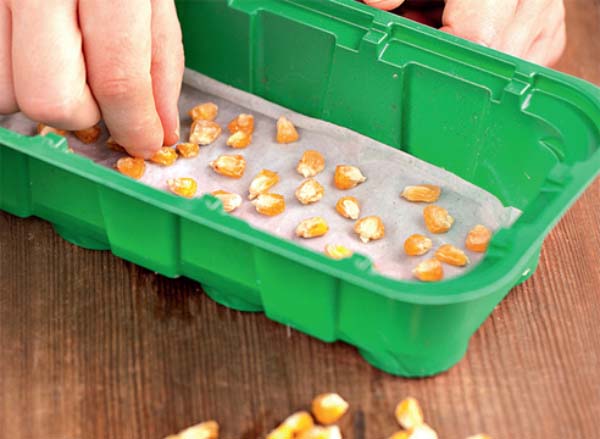
You can also sprout on hot sawdust.
- When the seeds germinate (after 2-3 days), plant them on seedlings or in open ground.
Advice! Even if you don't want to germinate corn seeds, at least decontaminate them.
Direct sowing
Step-by-step instructions for planting corn seeds in open ground are as follows:
- Choose the right time for landing.
- Prepare the bed in advance and pickle the seeds.
- Make grooves or holes.
In this case, it is better to immediately put 3-4 grains in one hole for safety net, in order to subsequently remove weaker shoots.
- Water the planting indentations liberally and wait until the moisture is completely absorbed.
- Sow seeds to a depth of 4-5 cm.
As for the planting scheme, corn is grown in a wide-row method in several rows or rows (at least 2, and preferably 3-4), while the distance between plants in a row (row) is 20-30 cm, and in row spacings - 50 -70 cm.
Important! You cannot plant corn alone or 3-4 bushes in one row, otherwise it will be poorly pollinated and there will be many empty ears. The fact is that corn is pollinated by the wind, so it must be sown thickly and in several rows.
However, it is also impossible to over-compact the crops of corn, since with a lack of food and sunlight, the yield will noticeably decrease.
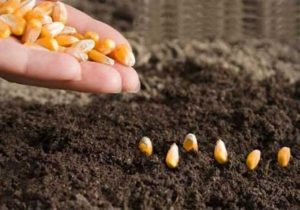
- Sprinkle with soil and compact the surface.
- Spill lightly again.
- If the weather is not very stable, then cover it with foil or put a greenhouse on arches.
Video: planting corn in open ground
Growing corn through seedlings
Step-by-step instruction landing corn for seedlings:
- Fill containers with potting mix.
It should be planted in separate cells or cups.
The soil mixture can be prepared from peat, humus and sand, or you can take a universal substrate for growing vegetable seedlings, and then be sure to disinfect, for example, spilling with a solution Fitosporin (according to instructions).
- Spill abundantly with water.
- Plant seeds 3-4 cm deep.
- For successful germination, the planting container is recommended to be placed in a warm place where the temperature is + 23-25 degrees.
Further seedling care corn at home or in a greenhouse:
- The first shoots will appear within 5-7 days.
- After that, it is recommended to lower the temperature regime for 3-5 days to + 15-18 degrees (during the day) and + 13-15 (at night), which will help to avoid pulling out the seedlings.
- Then increase the temperature to + 20-23 in the daytime and + 15-18 at night.
- Water sparingly as the soil surface dries.
- Temper 5-7 days before disembarkation.
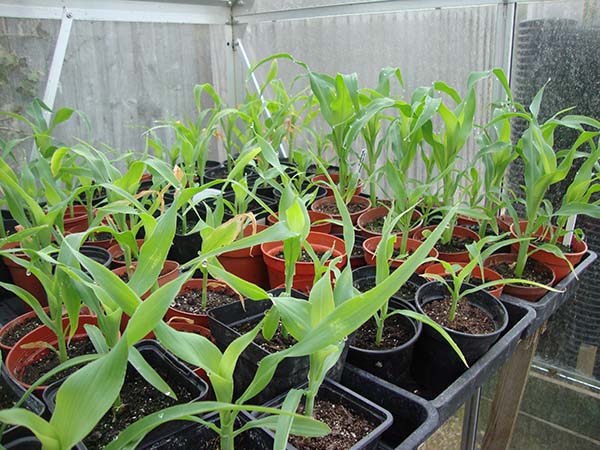
Video: growing sweet corn through seedlings
Disembarkation corn seedlings in open ground:
- 3 weeks after germination, the seedlings will be ready for planting in the ground.
- By this time, the corn seedlings should be well developed and have 4-5 leaves, and the root system should wrap around the lump of the substrate well, so that you can get the seedlings out of the cassette cell or cups without injury and sprinkling the earthy clod.
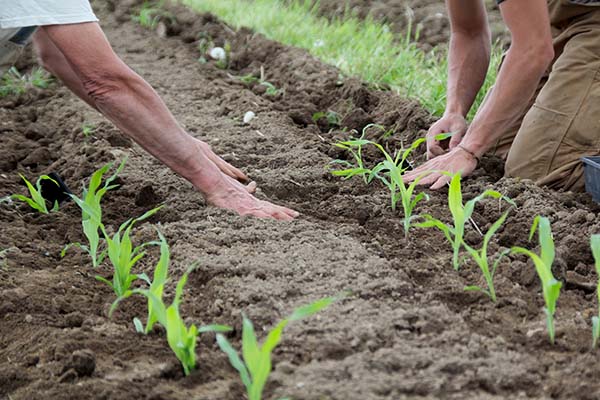
- Corn seedlings are planted in the ground when the soil warms up above +14 degrees and the threat of recurrent frosts has passed.
- The planting itself is standard, while corn seedlings can be buried, because it grows additional roots from each node.
Advice! It is highly desirable to initially plant corn under temporary film shelters (greenhouses) on arcs. In this case, you can use both transparent film and white agrofibre.
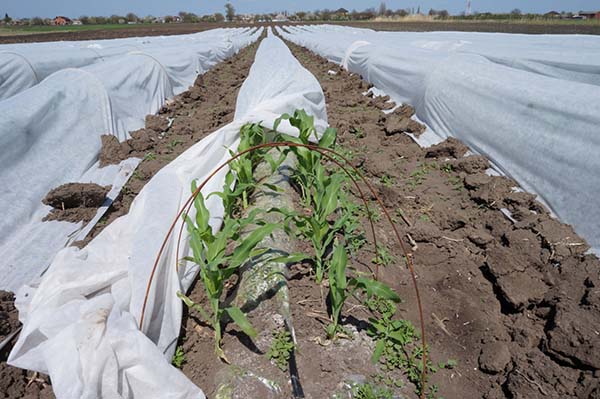
By the way! In principle, you can plant seedlings on white agrofibre, making cross-shaped cuts in it.
Outdoor corn care: growing rules
Note! At the initial stage, corn develops at a slow pace, so you need to take this into account and be patient.
The minimum temperature for seed germination is + 10-12 ° C (at such temperatures, seedlings appear in 2-3 weeks).
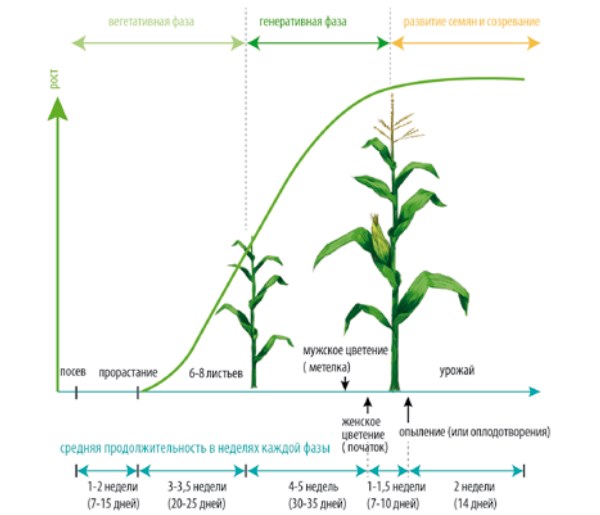
The rapid growth of seedlings occurs in the phase of formation of the first true leaves. Then a period of growth retardation begins again, since all the plant's forces are directed to the formation and maturation of the ears.
Given these features of the development of culture, it is necessary to provide full care throughout the season.
By the way! If you already had problems with pollination of corn, no matter how often and close you plant it, then you can try to do it manually, namely shake (shake) the plants in calm weather, in the morning, during the flowering period.
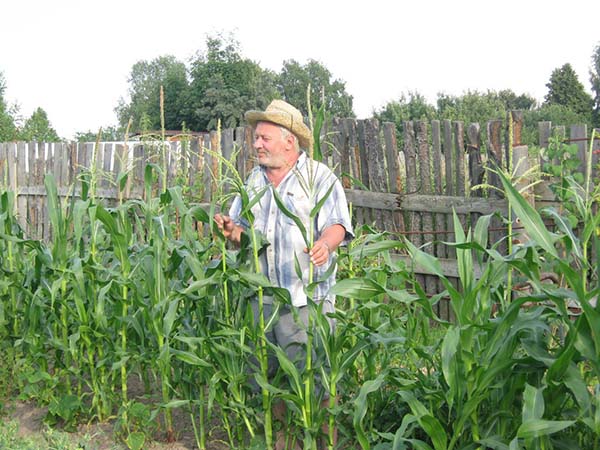
Loosening, weeding and hilling
At the initial stage of the development of corn, constant loosening of the soil and regular removal of weeds are necessary.
Then, when the corn grows up to 30-50 cm in height, it should be hilled for resistance from wind and rainfall and, most importantly, for the formation of additional surface roots.
Interesting! In the industrial cultivation of corn, in order to destroy weeds, destroy the crust and retain moisture, harrowing is carried out no later than 3-5 days (as well as in the phase of 3-4 true leaves) before the emergence of seedlings on corn crops. it's the same enhances air access to the root system and contributes to the emergence of more friendly seedlings.
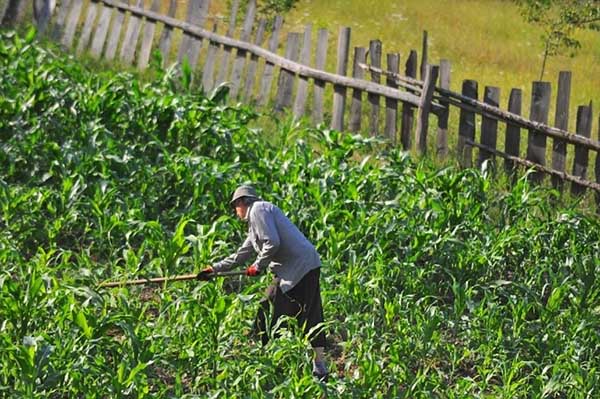
Stealing
If you want to get an earlier harvest (to speed up the ripening of the ears on the main stem), then you can try to remove the side shoots (stepchildren) at the base of the main stem.
Video: what to do with corn stepchildren
Watering
Despite the fact that corn is considered a drought-resistant crop (fodder - yes, but sugar - to a lesser extent), at certain periods of development, it is in dire need of abundant and timely watering.
So, corn requires a different amount of moisture during certain periods of the growing season:
- moderately at the time of emergence;
- strong enough during the period when panicles start and flowering (ear formation phase);
- the greatest need is 2-3 weeks after flowering (the period of pouring the grains).
- in the future, the need for irrigation is significantly reduced.
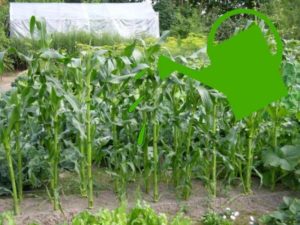
Thus, the quantity and quality of the harvest is directly dependent on good watering during the formation and filling of grain.
Top dressing
For the full growth and formation of cobs, corn needs a whole range of macro- and microelements.
The maximum demand of corn in nitrogen, followed by phosphorus, then potassium,
The first time fertilization is carried out when 2-4 true leaves appear. During this period, the plant needs a lot nitrogen, for example, you can use organic substances - a solution of mullein or chicken droppings, or mineral - ammonium nitrate or urea.
Since nitrogen tends to wash out of the soil, at least 2 dressings should be done before flowering.
And when the plants enter the flowering phase, they will need potassium and phosphorus in maximum quantities. Therefore, shortly before this moment (1-2 weeks), you should feed the corn superphosphate and potassium sulfate or bone meal and wood ash.
Worth knowing! As mentioned earlier, in addition to macronutrients, corn also requires microelements (in order of need): calcium, magnesium, sulfur, iron, manganese, zinc, copper, zinc, boron, molybdenum. And it means that you should purchase at least Humate +7.
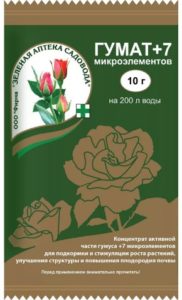
Video: basic rules for planting and caring for corn, watering and feeding
Pests and diseases of corn
Like all crops, corn is susceptible to many diseases and pests. Therefore, it is worth familiarizing yourself with its most common problems in order to react in time and take the necessary measures (use fungicides and insecticides).
Diseases of corn:
- moldy seeds;
- bubble smut (Mexican truffle);
- flying smut;
- helminthosporium leaf spot;
- root and stem rot;
- fusarium;
- gray rot.
To fight diseases, the use of biological agents such as Trichodermin or similar (for example, Trichoderma Veride, etc.) is quite effective.
Maize pests:
- aphids (common cereal, corn);
- wireworm;
- sludge (sandy, steppe and corn);
- weevil (southern gray);
- scoop (winter and others);
- corn (stem) butterfly;
- Swedish (miner) fly.
When to harvest corn and how to store it
When exactly to harvest corn, each gardener decides independently, since it depends on the ultimate goal of growing this crop.
For fresh consumption, it is recommended to harvest corn cobs in the dairy stage of maturationwhen the grains are still soft and have a light yellow tint.
Note! You cannot collect the cobs all at once: it is recommended to start collecting them from the top, and only then pick those that are below.
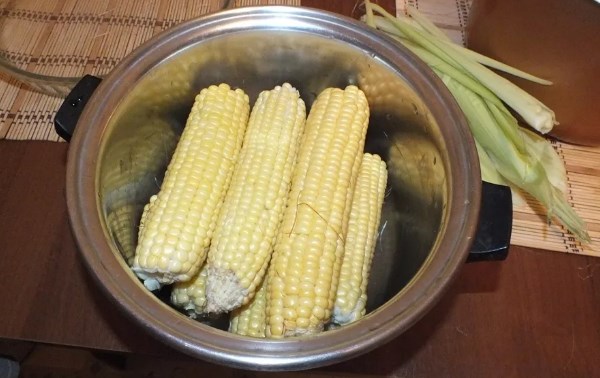
Interesting! If the plant is grown for grain (i.e. on an industrial scale), which must subsequently be stored for a long time, then the corn harvest should be carried out no earlier than biological maturity of ears... A sign of it is the darkening of the tips of the panicle.
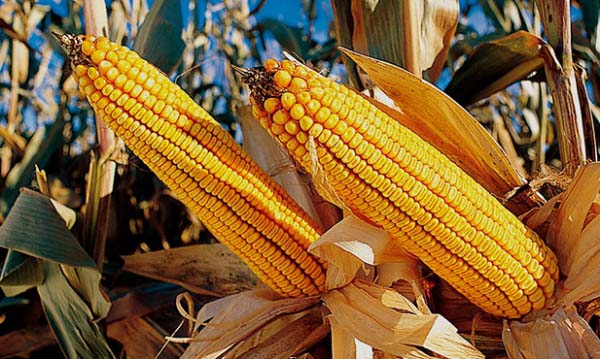
It is worth storing corn (in grain form) in a dry, well-ventilated area. And always so as to protect the crop from rodents.
Video: aspects of storing corn
At home fresh corn can be saved for the winter, freezing in the freezer.
Thus, if you follow the simple rules of planting and caring for corn, you can achieve a good harvest in any region. This will provide an opportunity to please your family with tasty and healthy cobs of sweet corn.
Video: all the secrets of growing corn

